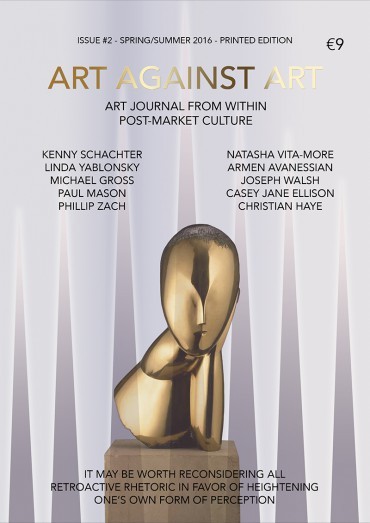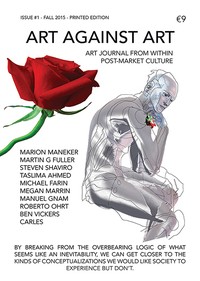Art Against Art i — September 2016, #2
EDITORIAL
When considering the art field as being a raft in speculative time, the tendency is to seek comfort in numbers, regressive ideas such as another return to painting[1] or hedging bets on all sides whilst pursuing an unreasonable personal growth fetish.
These are classic reactions to a perceived risk that arises as a result of readjusting to new data. Uncertainty, if left unmediated, will pose a risk not just to market stability but to conceptual stability as it becomes more and more difficult to differentiate between artists and ads; artworks and hype-objects; or content and sponsored content – keeping us in a state of high drama too complex to decode. For example artists who consciously use marketing strategies as art are contextually mixed up with masses of artists who simply run a marketing strategy. Or, equally, galleries with a reputation for long-term quality regularly use their weight to inflate very short-lived speculative art. It is in these differences that art barters itself off very quickly to sometimes uninteresting effects holding us in a certain inappropriate narrative if we are not careful.
Up until a hundred years ago, it was normal to assume that all art aimed at “beauty” or varying degrees of “representation” and that anything but, would not be considered art. Later, after The Fountain, this evolved into the politics of mass production leading to whatever fallacy that we have today – perhaps a speculative bias targeted at an erroneously projected future consensus. It may be worth considering ditching all retroactive rhetoric about “safe places” in favor of heightening one’s own form of perception (perhaps even through enhancement), to adapt to the new environment and to filter through informational debris.
What do you think of this issue?
Sign up or Log in to join the discussion.
Recent activity
- 12 Jan, 2017 New cover uploaded by Mottobooks
- 12 Jan, 2017 Added to Magpile by Mottobooks



